August 6, 2024
Are you feeling overwhelmed by the countless health trends and biohacks flooding your social media feeds? Do you find yourself constantly chasing the next “miracle” supplement or workout routine, only to feel like you’re not making real progress? Perhaps you’re struggling with low energy, stubborn weight gain, or nagging health issues that just won’t seem to resolve.
In today’s fast-paced world, it’s easy to feel lost in the sea of health information. You might catch yourself asking:
- “How can I truly optimize my health without spending a fortune or dedicating my entire life to it?”
- “What are the most effective strategies for improving my energy, longevity, and overall well-being?”
- “How do I separate the truly transformative health practices from the overhyped fads?”
If any of this resonates with you, rest assured, you’re not navigating these challenges alone — but with a little guidance (from yours truly) these questions might be a lot simpler to answer than you think.
In June, I had the privilege of presenting “The 6 H’s of Health Optimization: My Latest Learnings & Biggest Biohacks” at the Health Optimization Summit in London. Drawing from years of research and testing, interviews with leading experts, and personal experimentation, I shared the most transformative insights I’ve discovered when it comes to overcoming the health hurdles millions of people struggle to resolve every year.
If you missed the Health Optimization Summit this year or seek a deeper dive into the strategies you discovered there, part one of this article covers the first three pillars of optimal health: heart, home, and hormesis, and focuses on:
- How to truly nurture your heart health beyond basic cholesterol tests
- Simple yet powerful ways to optimize your home environment for better sleep, energy, and cognitive function
- The power of embracing beneficial stress for greater resilience
Whether you’re a seasoned biohacker or just beginning your wellness journey, you’ll find actionable insights and strategies you can start implementing today to reclaim your vitality and live a boundless life (and make sure to stay tuned for part two, which covers the other three keys to health optimization: hunger, hustle, and hush).
Key Takeaways
- Regular cholesterol checks and basic cardio are essential but insufficient for optimal heart health. Advanced diagnostic tools like CT angiography and CIMT score provide a more complete understanding, revealing issues like plaque buildup which standard tests might miss.
- Biohacking your home by replicating natural conditions can significantly enhance health. Utilizing grounding mats, adjusting lighting to mimic natural daylight patterns, and maintaining air quality with purifiers and specific plants create a healthier living space.
- Incorporating a mix of LED and incandescent lights to simulate natural sunlight indoors can improve sleep and overall well-being. Specific recommendations include using flicker-free OLED lights during the day, transitioning to warmer incandescent lights in the evening, and using red lights at night.
- High-quality air purifiers, frequent cleaning, and the inclusion of air-purifying plants are crucial for maintaining good indoor air quality. Post-exposure strategies, such as nebulizing hydrogen peroxide and using exosome infusion, can help heal lungs after exposure to pollution.
- Introducing mild stressors like saunas, cold exposure, intermittent fasting, and exercise can boost the body’s resilience. These hormetic practices help improve cardiovascular health, metabolism, immune function, and overall longevity.
Navigating the Maze of “Wellness Trends” with the First 3 Key Pillars of Health Optimization
1. Heart: Beyond Basic Cardio
When it comes to heart health, you’ve likely been conditioned to focus solely on cholesterol numbers and basic cardio exercise. But the truth is, there’s so much more to keeping your ticker in top shape.
For years, I thought I was doing everything right for my heart. I exercised regularly and ate a healthy diet, and my lipid panels always looked good. But earlier this year, I had a shocking revelation: despite my healthy lifestyle, my lipid panel was lit up like a Christmas tree. It was a wake-up call that led me to dig deeper.
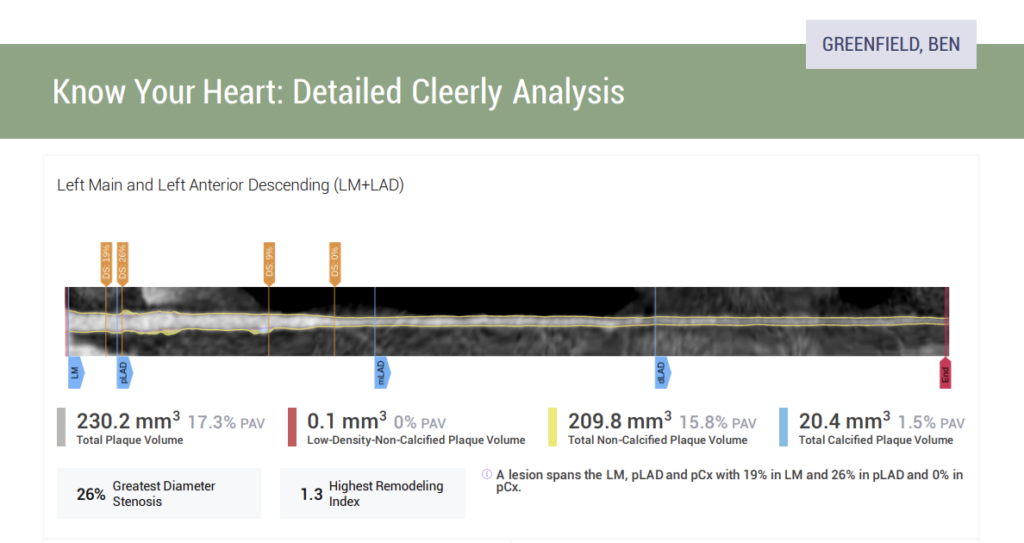 I underwent a CT angiography test called a Cleerly scan, which involved receiving an injection of a radioactive dye followed by imaging of my heart (for more information, you can check this podcast out). The results revealed significant plaque buildup in the left anterior descending artery (LAD), often referred to as the “widowmaker.” This discovery was both alarming and eye-opening, revealing that relying solely on blood tests doesn’t provide a complete picture of your heart health.
I underwent a CT angiography test called a Cleerly scan, which involved receiving an injection of a radioactive dye followed by imaging of my heart (for more information, you can check this podcast out). The results revealed significant plaque buildup in the left anterior descending artery (LAD), often referred to as the “widowmaker.” This discovery was both alarming and eye-opening, revealing that relying solely on blood tests doesn’t provide a complete picture of your heart health.
The downside of CT angiography is that it does expose you to radiation, but you can mitigate this with iodine, spirulina, and shilajit (which can be effective at binding and removing radiation from the body). However, because of the radiation, it’s still not a great idea to regularly do a test like this, and so there are other options that I get into below.
In addition to CT angiography, other radiation-free tests listed below offer a more comprehensive view of your heart health:
- CIMT (Carotid Intima-Media Thickness) Score: This non-invasive ultrasound measures the thickness of the inner layers of your carotid arteries, providing a strong correlation with coronary artery health. I recently discovered that the CIMT score offers about 97% to 98% accuracy compared to CT angiography. You can get a CIMT test done regularly, which gives a comprehensive view of your arterial condition. While it’s crucial to ensure that the practitioner is skilled, I’ve found it to be an essential part of my routine for monitoring heart health. If interested, you can check out Prevention Myths or visit Vasolabs’ website to find qualified practitioners.
- HART Scan: This innovative blood test measures four different proteins linked to plaque accumulation in the arteries. It’s a great alternative for those concerned about the radiation exposure of CT angiography. By assessing these proteins, the HART Scan can help determine your risk of plaque buildup without the expense and hassle of more invasive procedures. I’ve found it to be a highly useful tool for evaluating heart health while avoiding the downsides of traditional imaging methods.
The Best Supplement Stack for Heart Health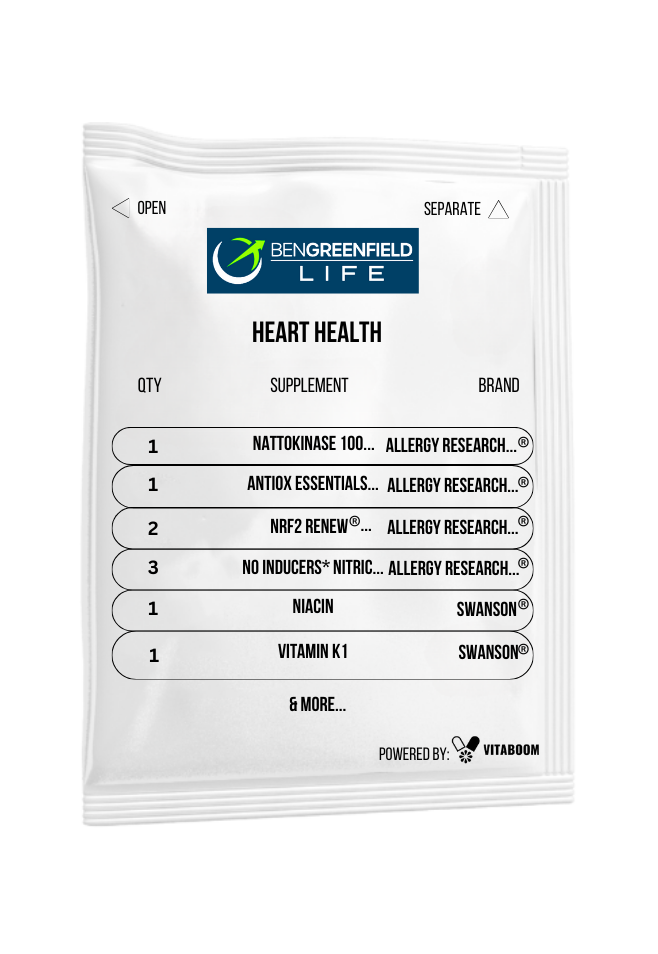
Based on my research and conversations with experts like Dr. Stephen Hussey, Dr. Thomas Cowan, Dr. Barrie Tan, and Dr. Darshan Shah, I’ve developed a comprehensive heart health stack that has DRASTICALLY improved my heart health (which you can see by viewing my recent lipid panel results). This heart health-boosting supplement stack includes:
Additionally, for a simple and effective way to boost your heart health, check out the heart health stack I recently developed for Dr. Shah (you can check out our latest podcast together here) and Vitaboom. I basically put it together so that folks didn’t have to keep going to the four corners of the planet to find all the different supplements they need for heart health. Each box you receive includes a 30-day supply of my favorite heart health supplements, and each dose is conveniently packed in a small, portable packet, so you can leave all those bulky supplement bottles behind! You can discover more about our collaboration here.
And for more information on maintaining a healthy heart, you can also check out these podcasts:
2. Home: Optimizing Your Environment for Better Health
Somebody once explained to me that biohacking your home is basically taking what you experience in a natural environment and trying to recreate that in spaces like your bedroom or office.
That’s why it’s a good idea to mimic sunlight as much as possible indoors. This means adjusting your lighting throughout the day, from bright daylight to calming twilight, and finally to night.
Light: Mimicking Nature Indoors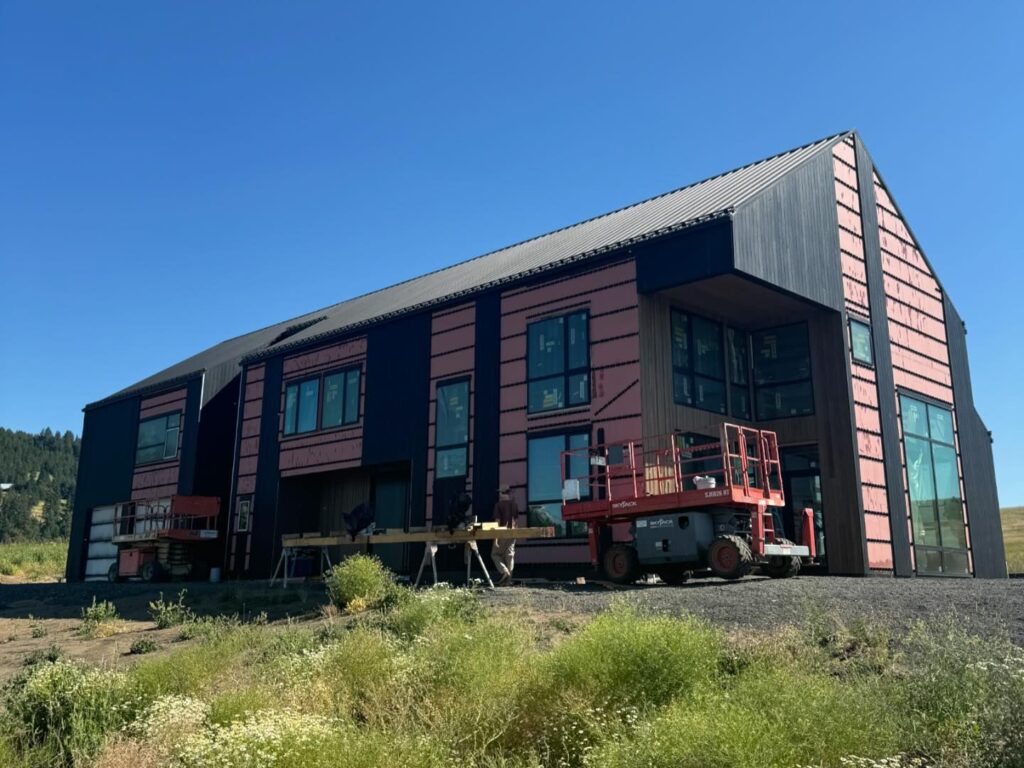
Building my new home in North Idaho has been an exciting journey, especially when it comes to optimizing every aspect of my living environment. One area where I’ve really geeked out is lighting. My current home is outfitted with various lighting options, but I’ve recently learned some new things that have transformed how I approach this essential aspect of health (for more information, you can check out my podcasts with Brian Hoyer and Paula Baker-Laporte).
When you step outside into natural sunlight, you’re exposed to a spectrum of light that includes about 50% to 60% visible light. This spectrum contains a mix of bright, bluish-green wavelengths along with near and far red wavelengths, plus a touch of UVA and UVB. To simulate natural sunlight as closely as possible in your indoor environment, you’ll also need to change things up from the daytime to twilight to nighttime.
I recommend the following combination of LED and incandescent lighting throughout the day:
- Daytime lighting: For daytime, aim for about 75% LED lighting and 25% incandescent. While LEDs have faced criticism for issues like flicker and EMF, they are still incredibly effective for simulating daylight when used correctly. However, not all LED lights are created equal. Traditional LEDs are known for their flicker, higher EMF emissions, and concentrated blue light, which can contribute to issues like retinal damage, sleep disturbances, brain fog, and energy problems. Fortunately, there’s a newer type of LED technology called OLED. OLED lights are low in flicker and EMF, making them a better option for blending with incandescent lights. By using a mix of 75% OLED and 25% incandescent bulbs in your home’s waking areas, you’ll achieve a lighting environment that closely resembles natural sunlight.
- Twilight lighting: As day turns to night, your lighting needs to shift. For twilight or evening settings like dining rooms or game rooms, the ideal ratio is 25% LED or OLED and 75% incandescent. This setup creates a warm, relaxing environment suitable for winding down.
- Nighttime lighting: If you walk into my bedroom, it looks like an Amsterdam nightclub. This is because I use red incandescent bulbs to create a calming, sleep-friendly atmosphere.
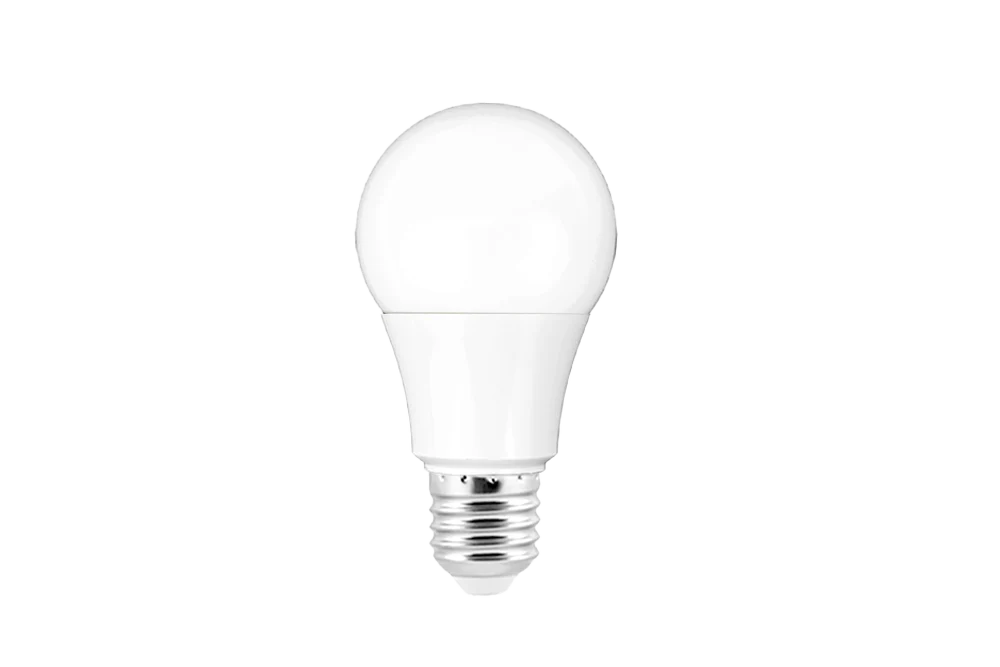 For the best results, consider bulbs that are specifically designed to be flicker-free. Recommended options include flicker-free OLED lights (Philips Eye Comfort and bulbs from BON CHARGE). When it comes to incandescent bulbs, choose ones that are 100 watts or higher to minimize flicker (I recommend Chromalux’s CLEAR 100W bulbs).
For the best results, consider bulbs that are specifically designed to be flicker-free. Recommended options include flicker-free OLED lights (Philips Eye Comfort and bulbs from BON CHARGE). When it comes to incandescent bulbs, choose ones that are 100 watts or higher to minimize flicker (I recommend Chromalux’s CLEAR 100W bulbs).
Additionally, if the idea of changing all your bulbs seems daunting, companies like BON CHARGE and Block Blue Light offer versatile bulbs that can switch between daytime, twilight, and red light modes with a simple flick of a switch. This makes it easier to adapt your lighting to the time of day without a major overhaul.
Additional Advanced Lighting Tips
- Incorporating UVA and UVB light: UVA and UVB rays, which are part of the sunlight spectrum, have their own advantages. UVA contributes to vitamin D production, while UVB is linked to nitric oxide synthesis. To mimic natural light, I use OttLight Systems‘ Zero-Flicker Ultraviolet UVA 395 desk clamp that emits UVA light and Enyrgy Light Therapy‘s “Nutritional Light Technology,” which produces UVB light.
- Boosting wakefulness and synchronizing your circadian rhythm with LED light: Bright bluish-green light that flickers can be effective. I use a Beacon40, which produces high-intensity flickering LED light, for about 15 to 20 minutes each morning. Additionally, the desktop EVY LIGHT box, similar to those used for seasonal affective disorder, provides a powerful light boost each morning before work (use for 20 minutes).
- Traveling with light-hacking devices: When traveling, tools like Re-Timer glasses and HumanCharger can be invaluable. Re-Timer glasses offer bluish-green light therapy for about 20 to 25 minutes, while HumanChargers provide in-ear light therapy. I also use a small red light headlamp from Amazon to navigate dark hotel rooms, ensuring minimal disruption to my natural light exposure.
- Using red light therapy devices: Finally, devices like the Kineon wraparound red light and the Lumaflex waterproof red light offer excellent options for enhancing wellness. These tools can be a great addition to your routine, providing therapeutic benefits from red light.
Here are a few more resources you can explore if you’re interested in the topic of lighting:
Air: Breathing Easy at Home
In addition to optimizing light in your home, paying attention to air quality is crucial.
After returning from a trip to India with Jag Chima and Kris Gethin, where the air pollution levels were extremely high, I noticed a significant reduction in my breath-hold time, highlighting the severe impact of poor air quality. Poor air quality is associated with reduced cognitive performance, birth defects, cancer, asthma, COPD, and other health issues.
If you’re concerned about your air quality, I recommend checking out Airofit or SpiroLink, two companies that offer peak flow measurement devices to assess your lung function. Measuring inspiratory and expiratory volume and pressure can provide valuable insights into your respiratory health. Monitoring and managing your lung quality, like tracking your heart health, is essential for overall wellness.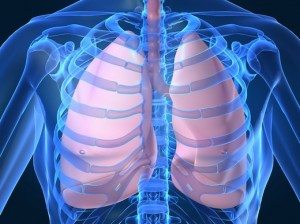
You can also dramatically improve your air quality by:
The Best Supplement Stack for Lung Health
Additionally, after coming back from India, I developed the following stack to support respiratory health. These are all the things that have been studied to help heal your lungs after they’ve been exposed to poor air quality:
- Nebulize H₂O₂ and/or glutathione (GlutaStat): After speaking with a doctor in Delhi, I learned about using a 3% food-grade hydrogen peroxide mixed with a ten-to-one saline solution in a nebulizer. I use this solution once a week while working to detoxify and heal my lungs. Liquid glutathione, specifically GlutaStat (you can join Dr. John Lieurance’s MitoZen Club to purchase what I use here), can also be used in a nebulizer for its healing properties, though it’s more expensive and harder to find.
- Exosome infusion: These have shown promise in extending lifespan and improving lung and brain health. I experimented with nebulizing exosomes and using them as a nasal spray, which made me feel like I was breathing clean air and cleared my mind remarkably. Although exosomes are currently expensive, they hold great potential for future health applications. For more information on exosomes, you can check out this podcast.
- Intranasal VIP: Vasoactive intestinal peptide (VIP) can be administered intranasally to enhance lung function and reduce inflammation. I found that using intranasal VIP improved my respiratory health significantly, especially after exposure to polluted environments. You can check out my peptide resources page for more insight into where to buy the best peptides.
- Hydration: Staying well-hydrated is crucial for maintaining healthy lung function. Drinking plenty of water helps thin mucus in the airways, making it easier to breathe and reducing the risk of respiratory infections.
- Antioxidants (vitamin C/vitamin E/glutathione): Antioxidants play a vital role in protecting lung tissue from oxidative damage caused by pollutants. I take a daily supplement of vitamin C and vitamin E to boost my antioxidant levels. Additionally, I use glutathione, either orally or via nebulization, to further support my lung health and reduce inflammation.
- Vitamin D: Vitamin D is essential for overall immune function and lung health. I ensure I get adequate sun exposure and supplement with vitamin D3, especially during the winter months or when I’m in areas with high pollution levels. Maintaining optimal vitamin D levels has significantly improved my respiratory resilience.
- Curcumin: Curcumin, the active compound in turmeric, has powerful anti-inflammatory and antioxidant properties. I include curcumin supplements in my daily regimen to help reduce lung inflammation and protect against environmental toxins. This natural remedy has been a valuable addition to my lung health routine.
- Choline: Choline is an essential nutrient that supports lung function and overall cellular health. I include choline-rich foods in my diet, such as eggs and liver, and take choline supplements to enhance my respiratory performance and cognitive function.
- Omega-3 fatty acids: Omega-3 fatty acids, found in fish oil and flaxseed oil, have anti-inflammatory properties that benefit lung health. I take omega-3 supplements daily to help reduce lung inflammation and support overall respiratory function, especially after exposure to air pollution.
For more information on improving your air quality, you can check out these podcasts and articles:
3. Hormesis: Embracing Beneficial Stress
What doesn’t kill you (in small doses) can actually make you stronger…
This is due to the biological phenomenon of hormesis, where low doses of a typically toxic or lethal agent produce a beneficial effect on the body.
If you think about it, there is a lot of stuff you regularly do that can harm you. Take consuming plants, for example. While the bloodthirsty, show-tune-belting plant in Little Shop of Horrors might be fictional, plants can indeed impose a threat on humans. Because they don’t have teeth, hooves, claws, or nails like animals, plants have built-in defense mechanisms (which you can discover more about here). Thankfully, you have the wits to outsmart them, which can be done through fermenting, cooking, soaking, slowly preparing, and sprouting plants to render their defenses digestible (you can check out this show for more insights!).
Despite this knowledge, for years, many health enthusiasts have avoided exposing their bodies to stressors because of the free radical theory of aging, which was developed in the 1960s. This theory suggests that free radicals speed up aging. But here’s the twist: that science has been questioned and is now seen as pretty outdated. In one study, researchers loaded up rodents with antioxidants and other free radical-fighting agents. Surprisingly, instead of extending their lives, this approach actually shortened their lifespan, revealing that depriving these creatures of free radicals and oxidative stress has anti-longevity effects.
Similar effects can be seen if you’re an athlete who might take heaps of antioxidants like vitamin C or E right after a killer workout. Instead of getting stronger, you’ll actually end up weaker because your body misses out on the full benefits of its natural hormetic response to exercise. By shutting down the body’s natural inflammatory process, you’re limiting mitochondrial production and muscle fiber growth which are crucial for the gains you’re aiming for.
With that said, you want to subject your body to small amounts of stress throughout the day from things that often get vilified, such as heat and cold exposure (like a daily sauna and cold plunge routine), calorie restriction, hyperbaric oxygen, and more.
When you expose your body to stress, it actually boosts its own antioxidant production, according to the latest, most modern, and scientifically updated theory in aging science: the mitochondrial free radical theory of aging (almost the complete opposite of the old one). Researchers have found that your cells get better at handling oxidative stress by producing internal antioxidants like superoxide dismutase and glutathione peroxidase. This is one reason I enjoy a small glass of wine or a bit of mezcal tequila (you can find out more about why I drink in moderation daily here) with soda water and lemon almost every day — cheers to alcohol!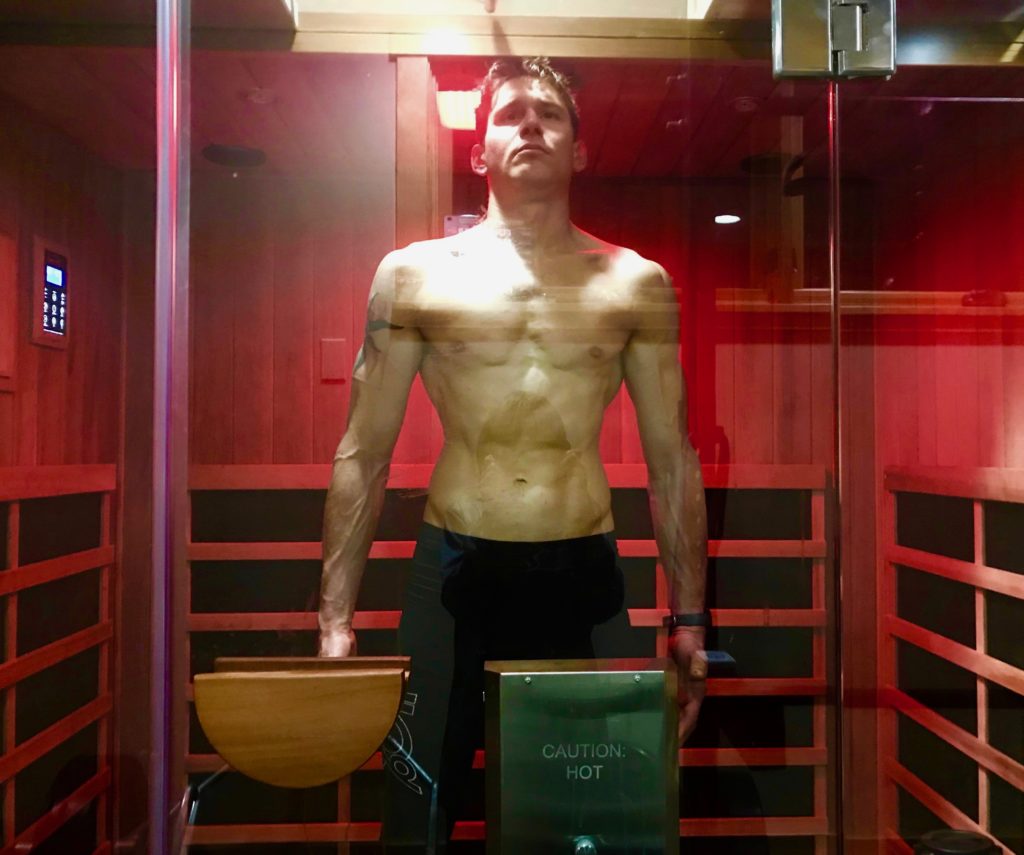
Finding the Sweet Spot
The key to harnessing the power of hormesis is finding the right balance. You want enough stress to stimulate adaptation, but not so much that it overwhelms your body’s ability to recover. This “sweet spot” will vary from person to person and may change over time as your resilience improves, but listed below are a few examples of various ways to produce the health-boosting effects of hormesis.
- Sauna Use: Regular sauna sessions expose your body to heat stress, which can improve cardiovascular health, boost cognitive function, and enhance detoxification.
- Cold Exposure: Brief cold showers or ice baths can boost metabolism, improve immune function, and increase mental resilience.
- Intermittent Fasting: Short periods of calorie restriction can trigger cellular repair processes and improve metabolic health.
- Exercise: The right amount of exercise stresses your body in ways that lead to improved strength, endurance, and overall health. If you run just a mile and a half to two miles every day, that’s a manageable amount of hormetic stress that your body can easily recover from.
- Plant “Toxins”: Many plants contain mild toxins that, in small amounts, can trigger beneficial adaptations in your body. This is why a diverse diet rich in various fruits, vegetables, and herbs is so beneficial.
- Moderate Alcohol Consumption: If you look at epidemiological studies, zero to one drinks in females and one to two drinks in males are associated with a longer lifespan, not a shorter lifespan. Now, those of you who think you can just squeeze that all into one night and go alcohol-free the rest of the week, don’t do that! While excessive drinking is clearly harmful, you can check out this study that shows light to moderate alcohol consumption has hormetic effects.
I want to encourage you not to be super orthorexic — embrace alcohol in moderation, engage in hard exercise, enjoy sauna sessions, get out of your comfort zone and into the heat, then cool down every once in a while without worrying about it negatively impacting your hormones, and eat a wide variety of plants, herbs, and spices.
The more you do, the more equipped you’ll become to handle sublethal stressors that can strengthen your body and improve your overall health.
If you’re interested in discovering more about hormesis, you can check out the following resources:
Summary
You’ve just uncovered three of the six essential pillars of health optimization that will empower you to navigate the complex world of modern health trends and biohacks with clarity and combined decades of expert insights.
Remember, the journey to optimal health is just that — a journey. It’s not about perfection or doing everything at once. Start with the areas that resonate most with you, and gradually incorporate more strategies as you feel ready. Pay attention to how your body responds and be willing to adjust your approach as needed. The most important thing is to stay curious, keep learning, and enjoy the process of discovering what helps you feel your best.
Just to briefly recap what I discussed with you in part one of “The 6 H’s of Health Optimization“:
- You need more than a lipid panel to properly test your heart health: Advanced diagnostic tools like CT angiography and CIMT scores give you a comprehensive understanding of your cardiovascular system. By incorporating a strategic supplement stack of annatto extract, ubiquinol, and vitamin K, you’re supercharging your heart health, allowing you to push your limits and achieve peak performance.
- Biohacking your home is crucial to your health and wellness: Optimizing your home environment with natural light patterns, air purifiers, and air-purifying plants transforms your living space into a health-enhancing haven, supporting respiratory health, sleep quality, and overall wellness.
- Regular exposure to sublethal stressors builds resilience and vitality: Daily practices like sauna use, cold exposure, intermittent fasting, and moderate exercise stimulate your body’s adaptive responses, improving cardiovascular health, metabolism, and immune function. Coupled with a diverse diet rich in plants, herbs, and spices, you’re equipping your body to handle various stressors more effectively. By harnessing the power of hormesis, you’re not just surviving but thriving, proving that what doesn’t kill you indeed makes you stronger.
In part two, I’ll give you the inside scoop into the other three H’s: hunger, hustle, and hush — don’t worry, I’ll be releasing this article soon, so keep an eye out for it in the next week or two!
Can’t wait for part two? You’re in luck!
You can catch my FULL presentation at the Health Optimization Summit in London right here!
And if you’re looking for more insights into your health and wellness, you’ll be happy to hear that I just finished updating and editing my best-selling book, Boundless. Boundless 2.0 covers everything you could possibly want to know about optimizing your health and longevity, including how to boost your mitochondrial function, reboot your circadian rhythm, increase your libido, manage chronic conditions, enhance your mind using new smart drugs and peptides, reverse aging, improve sleep, burn fat, maintain health routines at home and while traveling, and much more!
If you’re ready to uncover a treasure trove of the latest science-backed strategies for improving every aspect of your mind, body, and spirit, you can click this link to pre-order your copy of Boundless 2.0.
And, as always, feel free to drop me any questions, thoughts, or feedback you might have for me in the comments below, and I’ll be sure to respond!
